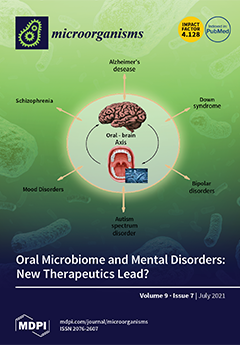Bacteriophages of thermophiles are of increasing interest owing to their important roles in many biogeochemical, ecological processes and in biotechnology applications, including emerging bionanotechnology. However, due to lack of in-depth investigation, they are underrepresented in the known prokaryotic virosphere. Therefore, there is a
[...] Read more.
Bacteriophages of thermophiles are of increasing interest owing to their important roles in many biogeochemical, ecological processes and in biotechnology applications, including emerging bionanotechnology. However, due to lack of in-depth investigation, they are underrepresented in the known prokaryotic virosphere. Therefore, there is a considerable potential for the discovery of novel bacteriophage-host systems in various environments: marine and terrestrial hot springs, compost piles, soil, industrial hot waters, among others. This review aims at providing a reference compendium of thermophages characterized thus far, which infect the species of thermophilic ‘
Bacillus group’ bacteria, mostly from
Geobacillus sp. We have listed 56 thermophages, out of which the majority belong to the
Siphoviridae family, others belong to the
Myoviridae and
Podoviridae families and, apparently, a few belong to the
Sphaerolipoviridae, Tectiviridae or
Corticoviridae families. All of their genomes are composed of dsDNA, either linear, circular or circularly permuted. Fourteen genomes have been sequenced; their sizes vary greatly from 35,055 bp to an exceptionally large genome of 160,590 bp. We have also included our unpublished data on TP-84, which infects
Geobacillus stearothermophilus (
G. stearothermophilus). Since the TP-84 genome sequence shows essentially no similarity to any previously characterized bacteriophage, we have defined TP-84 as a new species in the newly proposed genus
Tp84virus within the
Siphoviridae family. The information summary presented here may be helpful in comparative deciphering of the molecular basis of the thermophages’ biology, biotechnology and in analyzing the environmental aspects of the thermophages’ effect on the thermophile community.
Full article






